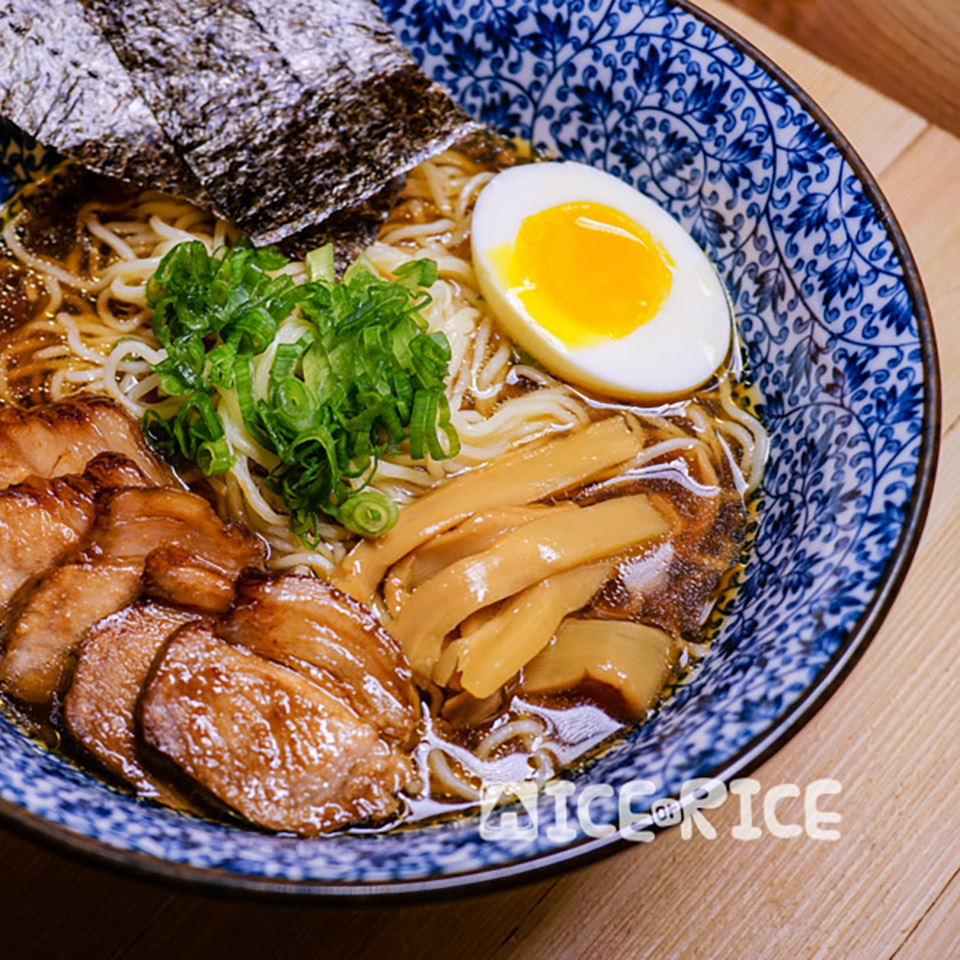Japanese Shoyu Ramen (Pressure Cooker)

This clear broth seasoned with soy sauce seems very simplistic, but it belies the intense umami flavor within the soup. We use chicken and 4 types of dried seafood to create an incredibly savory broth that is seasoned with a soy sauce tare that gives the broth a bit of sweetness and wonderful complexity. The best thing about this recipe is that we use a pressure cooker that not only helps extract all the flavor very quickly but also creates a beautifully clear broth.
INGRIDIENT
DIRECTION
Step: 1
Place chicken, scallops, anchovies, shrimp, bonito flakes, half the ginger, and kombu in an electric pressure cooker. Add water; close and lock the lid. Select the Soup setting; set timer for 90 minutes according to manufacturer’s instructions. Allow 10 to 15 minutes for pressure to build.
Step: 2
Release pressure using the natural-release method according to manufacturer’s instructions, 10 to 40 minutes. Strain broth through a colander or fine-mesh sieve. Skim the fatty oil off the top of the broth.
Step: 3
Combine soy sauce, mirin, sake, green onions, bonito flakes, sugar, garlic, and kombu in a medium saucepan over high heat. Bring to a boil. Reduce heat to low and simmer until flavors blend, about 10 minutes. Strain tare sauce through a fine-mesh sieve into a bowl.
Step: 4
Pour 2 tablespoons of tare sauce into a large bowl. Ladle in about 2 cups of broth. Add 1/6 of the ramen noodles. Repeat with remaining tare, broth, and ramen.
NUTRITION FACT
Per Serving: 686 calories; protein 41.5g; carbohydrates 30.8g; fat 39.5g; cholesterol 188.4mg; sodium 3530.7mg.
The word “stew” can refer to 2 time a dish and a cooking method. Stewing makes not fast cooking chunks of meat, vegetables or beans in a flavorful liquid . It’s similar to braising, instead it does have a few notable differences. The raw animal vested is chopped into smaller pieces instead of being cooked all of it , and the water based material completely covers the essential in a stew as compared to a braise’s halfway all of it . When meat or raw fruit are cooked using this method, the resulting dish is called stew.
Stew has a reputation for making a rib-sticking eating process that comfortable you up on a freezing , winter day. It’s right that ; a bowl of classic beef stew does have warming featured food , but stew’s cozy factor more than a way beyond protecting you from the chill . It’s all about those tender chunks of meat and vegetables, swimming in a thick, ultra-rich gravy. The more they come together make the greatest comfort food, no matter the weather.





